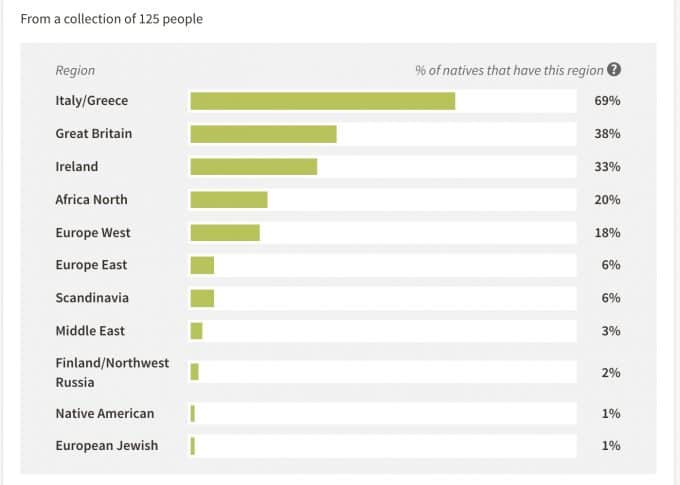Early on in the quest for answers to ethnicity and DNA, thousands of Puerto Ricans tested with the earlier DNA companies in order to identify their diverse ethnic roots. Puerto Rico is a mixture of the original Taino Indian culture, the white European Spanish who came from Spain, and the negro slaves they brought from Africa. This tri-racial mix of people have been recorded in various ways throughout Puerto Rican History.
A Big Presence..puerto Rican Genealogy Records
Puerto Rico is a commonwealth and territory of the United States after the Spanish American War of 1898. Puerto Ricans are natural-born citizens of the United States. ancestry.com has made available the Puerto Rico Civil Records after 1885 as well as the census from 1910, 1920, 1930, 1935, and 1940 under US census rules. NARA also has the Puerto Rico census available for those years. These records are all in Spanish.
Puerto Rican genealogy inevitably leads to lots and lots of cousins. Also, it doesn't provide enough space to record as far back as I have gotten. Of course, a good notepad is necessary to write notes about leads such as: occupations, dates, rumors, new people and the like. Your Puerto Rican ancestors are probably listed on the U.S. Residents of Puerto Rico have been counted in the following Federal Census years: 1910, 1920, 1930, 1940, and 1950–present. There are a few things to remember: first, Puerto Rico's Census records are in Spanish! The Puerto Rico Genealogy Guide provides some helpful.
As you review the census documents, you may notice in the Race column the designation of B for Blanco– meaning White. Unfortunately, many transcribers did not understand the Race designation as being written in Spanish, and you will see B transcribed as Black. This is not correct.
Persons of color in Puerto Rico were sometimes assigned an ethnic or racial descriptor just based on what the census taker believed. In many ways, these descriptions may have been biased. In reality, there are bi-racial and tri-racial people in Puerto Rico, as well as only white (Spanish) and only African-American or Negro. On the census you may see the designation- M or MU. This means mulato or half Spanish/half Negro. You may also see MZ- this means mestizo or half Spanish/half Ameri-Indian,
To assist you in understanding the complexity of cultures in colonized North America, here is a list of ethnic designations in Puerto Rico and other Central American countries.
Remember- Spanish=White=Blanco
Albarazado: Cambujo and Mulato
Albino: Spanish and Morisco

Allí te estás: Chamizo and Mestizo
Barcino : Albarazado and Mulato
Barnocino: Albarazado and Mestizo
Calpamulato : Zambaigo and Lobo
Cambujo: Indian (3⁄4) and Negro (1⁄4)
Cambur: Negro (1⁄2), Spanish (1⁄4), and Indian (1⁄4)
A Big Presence..puerto Rican Genealogy Society
Castizo In Puerto Rico: Spanish and Mestizo.
Chamizo: Coyote and Indian
Coyote : Spanish (1⁄2), Indian (3/8), and Negro (1/8)
Cuarteado: Spanish (1⁄2), Indian (1⁄4), and Negro (1⁄4)
Cuarterón : Spanish (3⁄4) and Negro (1⁄4)
Cuatrero : Indian (3⁄4) and Spanish (1⁄4)
Español : Spanish/spaniard
Español Criollo: Colonial-born Spaniard
Indio: Indian
Ladino : Spanish (3⁄4) and Indian (1⁄4) or Sephardic Jew
Lobo : Indian (3⁄4) and Negro (1⁄4)
Mestizo : Spanish (1⁄2) and Indian (1⁄2)

Moreno : Spanish (1⁄2), Indian (1⁄4), and Negro (1⁄4)
Morisco : Spanish and Mulato. In Spain: a baptized Moor
Mulato : Spanish (1⁄2) and Negro (1⁄2).
Negro : African Black
Negro fino Negro (3⁄4) and Spanish (1⁄4)
No me toques : Mixture of Spanish, Indian, and Negro
Ochavado : Spanish (7/8) and Negro (1/8)
Pardo : Indian (1⁄2), Spanish (1⁄4), and Negro (1⁄4)

Prieto: Negro (7/8) and Spanish (1/8)
Tresalvo : Spanish (3⁄4) and Negro (1⁄4)

Trigueño: of color- not defined.
Zambaigo : Spanish and Chino (Chinese)
Many waves of immigration brought other Europeans to Puerto Rico over the centuries- such as Portuguese, Corsicans, Italians, Dutch, Germans and French. These people are designated as B for Blanco on the census and civil registries.
In this four part series on Puerto Rican Genealogy, I will address other areas where confusion may occur and offer helpful tips.
A Big Presence..puerto Rican Genealogy Ancestry
Want to find other expert researchers just like Nydia for your research tips? Post a request to our community today!
In 1898, Puerto Rico was ceded to the United States from Spain in the Treaty of Paris, at the conclusion of the Spanish-American War. As of this guide's creation (2018), the Commonwealth of Puerto Rico is an unincorporated territory of the United States.
A Big Presence..puerto Rican Genealogy Sites
The history of Puerto Rican migration to the mainland United States begins with another island: Puerto Ricans were recruited to work on Hawaiian sugar plantations following the 1899 Atlantic hurricane season1. There are varying accounts as to how many Puerto Ricans were aboard the first vessels to arrive in Hawaii as part of this migration, but historical newspapers confirm that Puerto Rican migration to Hawaii began in 1900.
The complete history of Puerto Rico and migration of Puerto Ricans to the mainland United States and beyond is too extensive to recount here, but generally speaking, Puerto Ricans moved to major cities in the States seeking economic opportunity, and migration increased as air travel became more viable.
1 See Works Cited in this Guide.